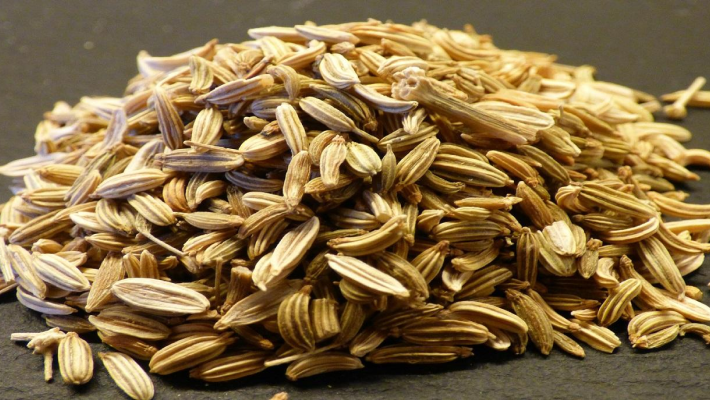Culinary Herbs
- €4,95
Chive Seeds for Culinary and Herb Garden UseChive seeds from Allium fistulosum offer an excellent addition to any herb garden or kitchen garden plants collection. Known for their coarse texture and mild onion-like flavor, these...
- €4,95
Winter-Hardy Chive Seeds for Culinary GardensDiscover the robust charm of Allium fistulosum, a winter-hardy herb prized for its thick, arrow-shaped leaves and distinctive large onion flavor. These chive seeds are ideal for cultivating edible garden...
- €4,95
Premium Chives Seeds for Culinary Herb Gardens Discover the delicate flavor and versatility of Allium schoenoprasum with these chives seeds, perfect for enhancing any herb garden. Known for their fine, grass-like stems and beautiful violet-blue...
- €4,95
Chives Seeds for Multiple Harvests and Culinary UseDiscover the versatility of chives seeds from the Fine Prague variety, perfect for enhancing your collection of edible herbs. These Allium schoenoprasum seeds produce slender, flavorful leaves ideal...
- €4,95
Distinctive Cinnamon Basil Seeds for Culinary GardensDiscover the unique flavor and striking appearance of Cinnamon Basil Seeds, an aromatic herb variety prized for its mild cinnamon taste. This Ocimum basilicum cinnamomum cultivar features violet stems...
- €4,95
Distinctive Cinnamon Basil Seeds for Culinary UseDiscover the unique flavor of cinnamon basil seeds, derived from the aromatic herb Ocimum basilicum cinnamomum. This variety is prized for its cinnamon-flavored leaves, which add a warm, spicy...
- €4,95
Distinctive Citronella Coriander Fresh Herb FlavorDiscover the unique taste of citronella coriander, known for its fresh flavor and citrus-scented leaves. This variety of Coriandrum sativum features pointed leaves and a more pronounced lemon coriander aroma...
- €4,95
Cold-Tolerant Culinary Herb for Garden UseCommon parsley (Petroselinum crispum) is a versatile and aromatic herb prized for its smooth, lobed leaves that add fresh flavor to a variety of dishes. This early outdoor common parsley...
- €4,95
Versatile coriander seeds for culinary useDiscover the aromatic potential of Coriandrum sativum, commonly known as coriander or cilantro herb seeds, perfect for enhancing a wide range of dishes. This annual herb plant grows up to...
- €4,95
Fine Seeded Coriander Seeds for Culinary UseCoriander seeds from Coriandrum sativum offer a versatile addition to any herb garden, prized for both their aromatic seeds and fresh coriander leaves. These fine seeded coriander seeds belong...
- €4,95
Discover Aromatic Cumin Seeds For CookingCumin seeds from the Cuminum cyminum plant offer a distinctive light nutty flavor cherished in a variety of culinary traditions, including Indian and Arabian dishes. This aromatic cumin herb features...
- €4,95
Curled Parsley Seeds for Aromatic Herb GardeningDiscover the vibrant flavor of curled parsley seeds from the Bravour variety, perfect for enhancing your herb garden. These finely curled parsley seeds, scientifically known as Petroselinum crispum, produce...
- €4,95
Finely Curled Parsley Seeds for GarnishingDiscover the versatile qualities of curled parsley seeds from the Petroselinum crispum Bravour variety, prized for its finely curled parsley leaves that add an elegant touch to any culinary creation....
- €4,95
Curly Dark Green Parsley Seeds for Fresh Herb Gardens Discover the vibrant flavor of curly dark green parsley seeds, perfect for enriching your herb garden with a versatile and aromatic plant. This low-growing variety of...
- €4,95
Curly Dark Green Parsley Seeds For Fresh Kitchen HerbsEnhance your indoor herb gardening with curly dark green parsley seeds, known botanically as Petroselinum crispum. This variety produces lush, finely curled dark green leaves that add...
- €4,95
Premium Curly Dark Green Parsley Seeds for Herb GardensDiscover the vibrant flavor and texture of curly dark green parsley seeds, perfect for enhancing your culinary creations and herb garden. These low-growing plants feature finely curled,...
- €4,95
Spicy and Ornamental Dark Opal Basil PlantDiscover the rich flavor of Dark Opal Basil Seeds, a unique Ocimum basilicum purpurascens variety known for its striking dark red leaves and reddish stems. This anthocyanin-rich basil offers...
- €4,95
Compact Dill Nano Seeds for Patio and BalconyDiscover the versatility of dill nano seeds, perfect for balcony herb gardening and container-grown dill setups. This compact dill variety, known botanically as Anethum graveolens, thrives in small...
- €4,95
Compact Dill Seeds for Indoor and Outdoor Herb GardeningDiscover dill seeds from the Anethum graveolens Nano variety, prized for its slow bolting and compact growth habit. This dill seeds type is ideal for kitchen garden...
- €4,95
Fennel Seeds for Summer Planting and Culinary UseFennel seeds from Foeniculum vulgare var. dulce offer a versatile addition to any herb garden. Known for its licorice-flavored herb profile, this variety produces edible bulbs and aromatic...





































































